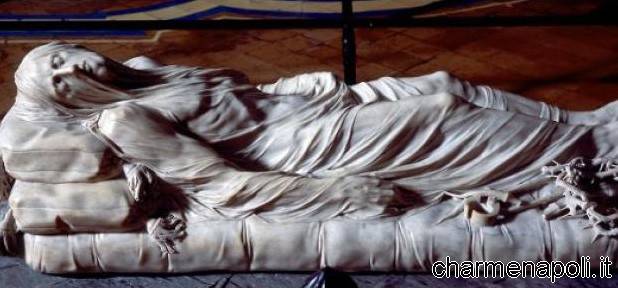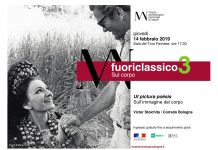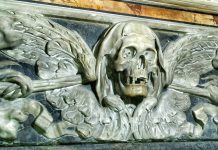The story of the “alchemist prince” Raimondo di Sangro has always fascinated Neapolitans and some still make the sign of the cross at the sound of his name. Although he is remembered as a devil worshipper and a mad, unscrupulous scientist, he and his family built one of the city’s most beautiful 18th century works of arth: the famous Sansevero Chapel just a few metres from Piazza San Domenico Maggiore. According to Neapolitan legend, in the late 16th century an innocent man was being taken to jail when part of the surrounding wall collapsed revealing a portrait of the Madonna. This prompted Giovan Francesco di Sangro duke of Torremaggiore to build a chapel dedicated to the Virgin Mary there around 1590, but it was the sixth prince of Sansevero, Raimondo di Sangro, who gave it is current splendor. [charme-gallery]Originally intended as a sepulcher for the noble family, it now houses some beautiful art works including “Modesty”, which depicts the patron’s mother, by Antonio Corradini in 1751, the anatomical machine located in the sacristy (dummies of a man and a woman with the arterial and venous system prominently) and the superb “Veiled Christ” by Giuseppe Sammartino (1751). The Veiled Christ still seems to breathe and suffer beneath the transparent shroud clinging to the broken body. The masterpiece of 18th century sculpture fascinates visitors to the Sansevero Chapel with its harsh realism: the seeming pulsing vein on Christ’s forehead, the nail holes in his hands and the spear wound in his side are so skillfully created that it might be the body of Crhist just taken down from the cross. It is dramatic and fascinating work and a symbol of hope for umanity. The vestry houses the disconcerting.

 Italiano
Italiano














